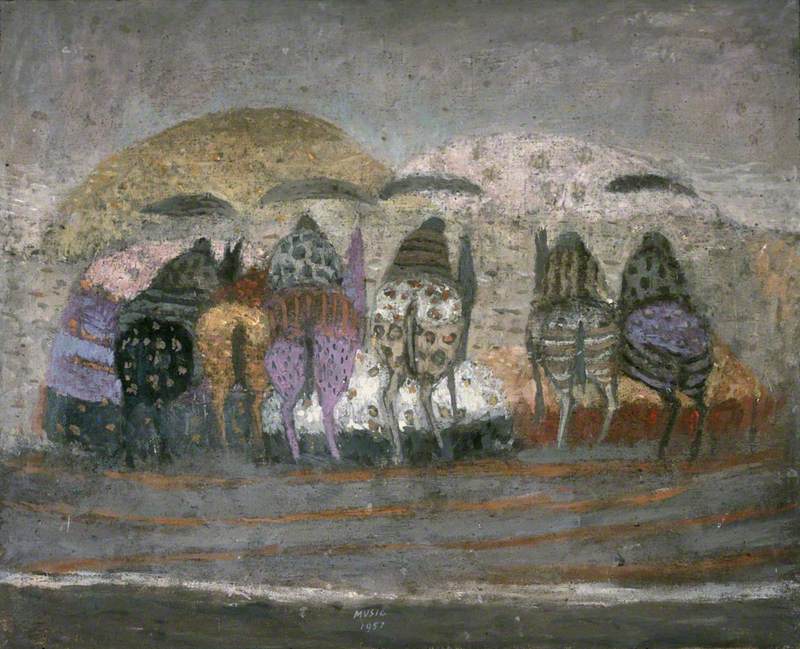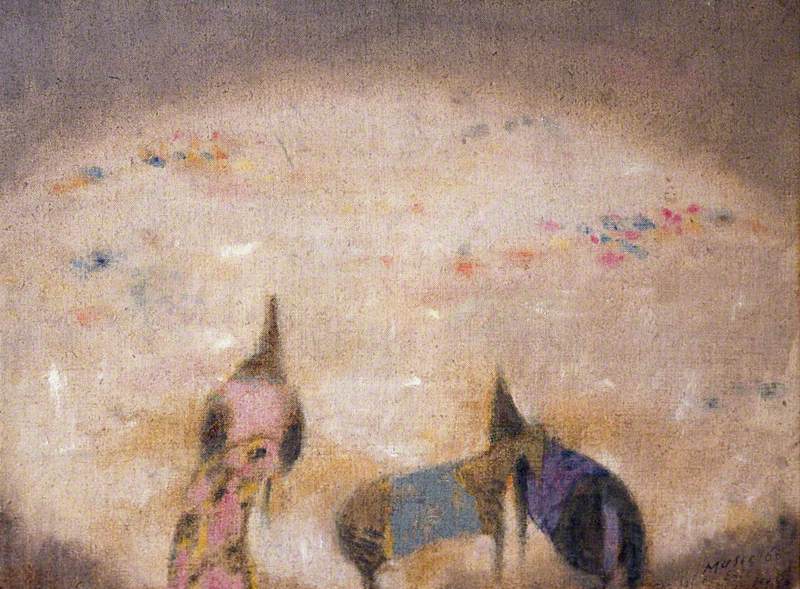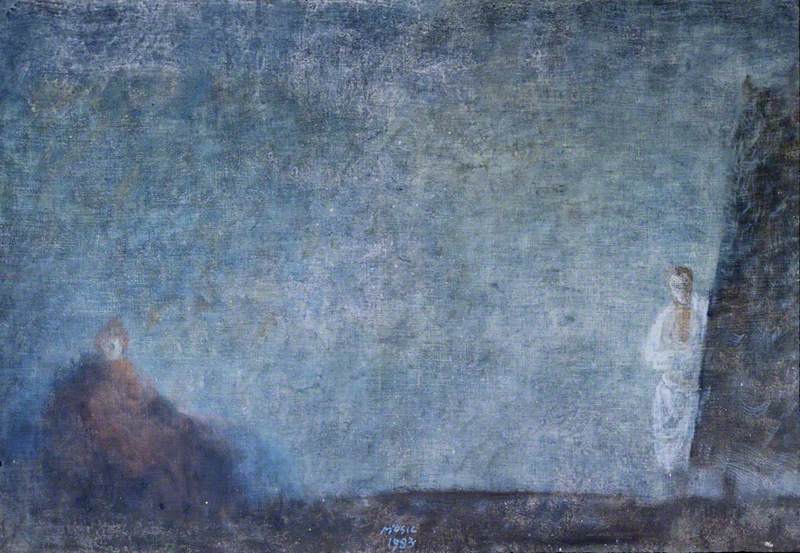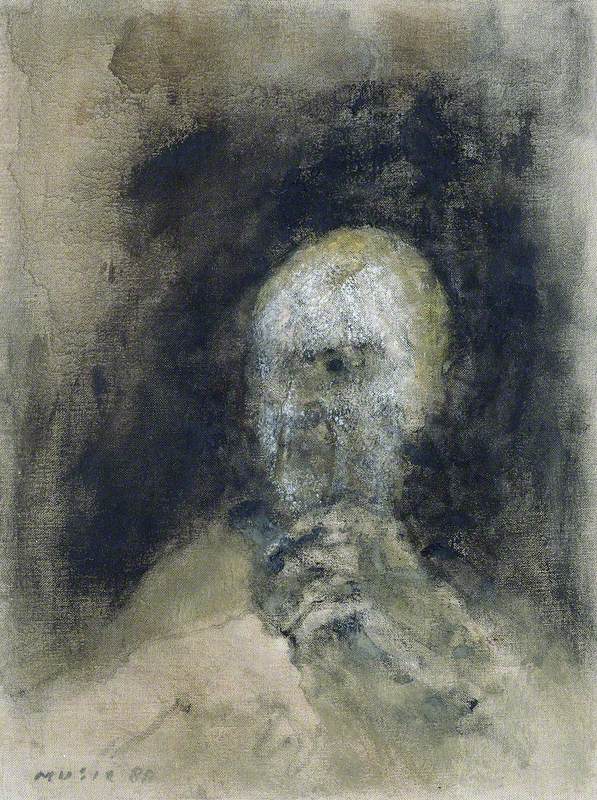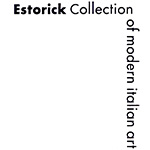
Slovenian/Italian painter and printmaker, born in Gorizia on the border between Slovenia and Italy. He described himself as being ‘of no fixed abode’. In travels over Europe he encountered the works of El Greco, *Klimt, and *Schiele. As a consequence of the Civil War, he left Spain and settled in Dalmatia, where the dusty landscapes profoundly affected his later work, and moved to Venice in 1943. He was arrested and tortured by the Gestapo for political reasons (he was not Jewish), and sent to Dachau concentration camp, where he made a number of drawings. After being liberated, be repeated these with expressive emphasis. As Ziva Amishai-Maisels points out, the most shocking feature of these drawings is that the corpses ‘sometimes seem to be still alive, they establish eye contact with the spectator’.
Text source: A Dictionary of Modern and Contemporary Art (Oxford University Press)

